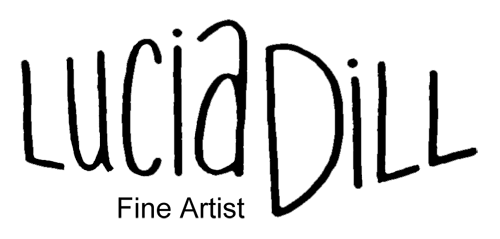I realized yesterday that while I don't miss the confusion and effort of gathering blog post content, I miss sharing stories about my work. So I thought I would talk about Both., a painting from my nature series, which consists of seven paintings of flowers or tree branches.
This painting is different from many of my pieces because:
1. There are no chairs.
2. It was done on paper and then mounted on a panel.
3. It is painted in ink and acrylic paint.
4. This piece has a title on its tag as well as a haiku about the piece.
Only two of the seven pieces in the nature series are done on paper, the rest of the nature series are paint on wooden panels. Still, I consider this piece a painting. For this series, I wrote a haiku for each painting, which was tedious and also
really satisfying. Writing and words and meranings and implications are really important to me and my work. I also felt relatively proper because haikus are supposed to be about nature. The haiku for Both. was one of the quickest to write because I had already taken notes about the imagery. You can read the haiku by clicking on the second image
below.
This tree was found in a friend's backyard. I plopped down on the back steps and searched for something to sketch and landed upon this fascinating tree. The tree itself is rather simple, hardly any smaller branches until about 10 feet up and yet its body language spoke to me. It told a story of two separate entities splitting early on, but yet still sharing one base. The mounted watercolor paper was originally supposed to be cut up and placed on two smaller panels, but having each limb in its own space emphasized the idea of division, as well as including messy paint edges. But life is messy and imperfect and so it makes sense to have this wonky shaped image. My notes and haiku relating to this image are wondering about why these two grew like that. Do all trees like that do that? Is it necessary? Or were they tired of each other? Why do we grow apart? Why are we not united? And yet, look how much do we still have in common.

Both.
9 x 12 x 1 inches
Ink and acrylic paint on paper on wood panel with paper tag
2015
Both.
Tag Detail of Haiku
Tag Detail of Haiku
2015

Tree sketch
Pencil on paper
2015





























